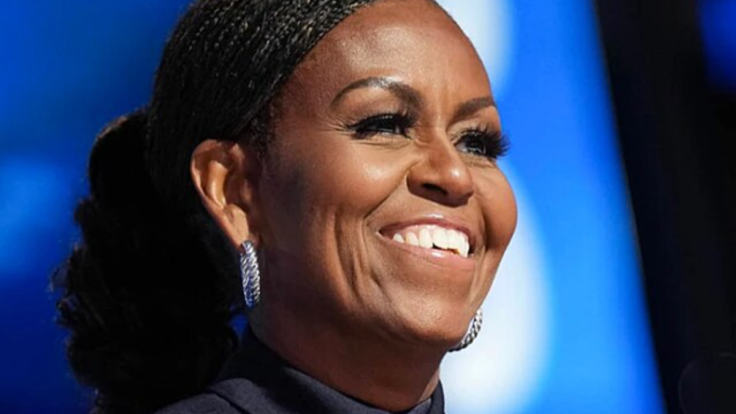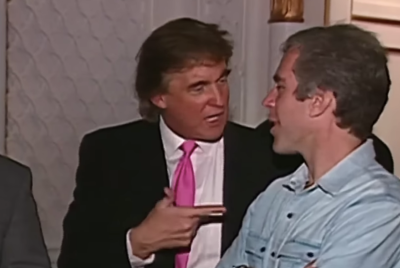Michelle Obama 'Mauled' For 'Going Full Miranda Priestly' In New Fashion Book
The former First Lady draws fire for her remarks on fashion as a strategic tool, blending style, business, and political messaging in a way some call 'high‑priestess' territory.

Michelle Obama is catching heat over her new book, The Look, with critics accusing her of 'going full Miranda Priestly' after she described fashion as a deliberate form of political strategy.
The former First Lady argues that clothes helped her command attention and communicate power during her eight years in the White House.
While many readers welcome her unfiltered look at the 'soft power' of style, others say her tone feels overly authoritative and reminiscent of the fictional, formidable Devil Wears Prada editor.
The uproar has sparked a lively debate about fashion, influence, and who gets to define personal presentation in public life.
Obama's latest book, co-written with stylist Meredith Koop, delves into how carefully chosen clothing helped her negotiate public life.
Backlash Over Claims That Fashion Is 'Strategy'
Michelle Obama's comments linking fashion to political communication have drawn criticism from insiders and social media commentators, who say she sounds strikingly like Miranda Priestly. Critics argue that emphasising clothing as a central tool of influence risks appearing elitist or disconnected from everyday people.
Fashion professionals quoted in early coverage described some of her phrasing as 'high-priestess territory', suggesting it strays close to the commanding voice of fictional fashion gatekeepers. Online reaction has been mixed: some users mocked the idea of Obama positioning herself as a style theorist. At the same time, supporters insisted she is entitled to explain how public scrutiny shaped her wardrobe.
The debate highlights a tension many public figures face: balancing authenticity with the intense expectations placed on their appearance.
Obama Defends Fashion As A Form Of 'Soft Power'
In her new book, Obama emphasises how clothes were a type of 'soft power' during her tenure as First Lady. She wrote:
'What I wore was important ... people looked forward to the outfits, and once I got their attention, they listened to what I had to say.'
She underlines that fashion is not only about aesthetics but also a multibillion-dollar industry, emphasising the economic aspect of style. Observers have drawn comparisons between her statements and Miranda Priestly's famous lines about fashion being an enormous business, citing the comparable tone and seriousness.
Obama describes fashion as a subtle yet effective weapon for capturing attention and conveying power. Critics believe that using style as a political tool may make her appear excessively calculated or removed from the daily realities of ordinary Americans.
Tone Criticised as Overly Authoritative
According to fashion insiders, Obama's comments, such as 'clothes are strategy' and 'every hemline is a political act,' reflect the powerful voice of high-fashion leaders in film and real life. Critics have regarded her tone as a purposeful assumption of authority, akin to that of a high priestess of style.
Observers believe that public personalities who promote themselves as fashion gurus risk being caricatured. This perception is reinforced when remarks combine political power with aesthetic judgement, resulting in a potent combination that can elicit both adoration and scorn.
Her Book Offers a Lighter Perspective
Obama has emphasised that the new book, which she co-wrote with her stylist Meredith Koop, is intended to be lighter and more approachable than earlier books like Becoming, despite the criticism. She emphasises that Koop helps her navigate political optics through wardrobe choices as well as aesthetic decisions.
Obama maintains that her attire was always 'safe and thoughtful and strategic,' intended to enhance her public responsibilities rather than attract unwanted attention. In addition to highlighting the creative collaboration between a prominent figure and their stylist, the book aims to provide readers with insight into how clothes may intersect with identity, communication, and influence.
Scrutiny as First Lady
Obama's wardrobe choices were continually scrutinised during her time as First Lady. She remembers that even seemingly insignificant decisions, like flaunting her arms, donning shorts following a flight, or altering her haircut, sparked debate and conjecture among the general public.
She talked about how little changes, like getting fringe, attracted a lot of attention and caused people to say things like, 'Oh my God, what does this mean?' These encounters influenced her attitude to personal presentation and helped her comprehend style as a communication tool.
Life After The White House: Dressing For Herself
Obama also reflects on years of intense scrutiny over seemingly harmless choices, from showing her arms to wearing shorts on a trip. These experiences shaped her understanding of clothing as a form of communication.
Now in her sixties, she says she dresses primarily for comfort and self-expression. Denim, braids, raw-edged suits and boots are her current staples. She rejects the idea that older women should fade from view, insisting she will not 'disappear' as she ages.
© Copyright IBTimes 2025. All rights reserved.



















